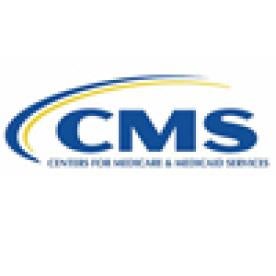The Centers for Medicare and Medicaid Services (“CMS”) recently issued guidance that starting Feb. 5, 2018, CMS will begin the process for the Low Volume Appeal (“LVA”) settlement option that CMS had announced on Nov. 3. Settlements will result in payments of 62 percent of the net Medicare amount billed and approved.
In light of the guidance, here are summaries of six important details:
-
Check your National Provider Identifier (NPI) now to know when your Expression of Interest (EOI) must be submitted.
-
Submitting an EOI does not bind you to a settlement—a provider may still decline the final administrative agreement.
-
Claims that settled will be excluded from future review by a MAC or RAC, but not CERT reviews or investigations related to potentially fraudulent claims
-
The settlement amount is 62% of the net claim approved amount, not necessarily the amount billed.
-
Claims that are included in this settlement will continue to show as “denied” in the applicable CMS database—this may be a key issue for providers seeking secondary payments.
-
Any interest paid by the appellant after the claim was denied will be refunded, but no interest will be paid for the claim under appeal.
CMS has published an FAQ and offered an audio presentation to discuss the LVA settlement process, which boils down to the following five steps for the eligible appellants:
-
Appellant submits an Expression of Interest (“EOI”) in a prescribed timeframe, which depends on the appellant’s national provider number ending in an even or odd number.
-
CMS determines if the appellant is eligible for the LVA settlement option; if eligible, CMS sends notification within 30 days of receiving the EOI, along with a spreadsheet of all potentially eligible claims and an Administrative Agreement (“Agreement”) for appellant to sign.
-
Appellant validates the Spreadsheet and signs the Agreement within 15 days of receipt, or sends an Eligibility Determination Request (“EDR”) to dispute any appeals that are listed or missing within the same timeframe.
-
Once the Agreement is countersigned by CMS, Medicare Administrative Contractors (“MACs”) price the claims and send a lump payment to appellant within 180 days.
-
The settled appeals are dismissed.
We provide key requirements for the eligible applicants and eligible appeals, as well as details about the LVA settlement process based on CMS’s publications and audio presentation below.
Eligible Applicants
Eligible applicants include Fee-For-Service Medicare Part A and Part B providers, physicians, and Durable Medical Equipment suppliers with fewer than 500 appeals associated with their National Provider Identifiers (“NPIs”) pending before the Office of Medicare Hearing and Appeals (“OMHA”) and the Medicare Appeals Council (“Council”) at the Departmental Appeals Board, collectively.
CMS specified that ineligible applicants are:
-
Beneficiaries, enrollees, their family members, or estates
-
State Medicaid Agencies
-
Medicare Advantage Organizations (Medicare Part C)
-
Those that filed for bankruptcy or expect to file for bankruptcy
-
Certain appellants that have or have had False Claims Act litigation or investigations pending against them, or other program integrity concerns, including pending civil, criminal, or administrative investigations
Eligible Appeals
Once an appellant is deemed eligible, then each appeal is determined for eligibility. All of the applicant’s eligible appeals must be settled; the appellant may not choose to settle some eligible appeals but not others.
For purposes of the LVA settlement, an “eligible appeal” is defined as one meeting all of the following elements:
-
The appeal was properly and timely filed at the OMHA or Council level as of November 3, 2017
-
The appeal has a total billed amount of $9,000 or less.
-
The claims included in the appeal were submitted for payment under Medicare Part A or Part B
-
The claims included in the appeal were not part of an extrapolation.
-
As of the date the Agreement is fully executed, the appeal was still pending at the OMHA or Council level of review – if a decision is rendered on an appeal prior to execution of the Agreement, then the appeal is not eligible for settlement.
-
The claims included in the appeal were denied by a Medicare contractor and remain in a fully denied status in the Medicare system.
LVA Settlement Process
To begin the LVA settlement process, appellants must complete and submit an EOI for each NPI. CMS warned that appellants should provide only the information that was requested on the EOI form; submitting personally identifiable information of the Medicare beneficiaries would result in a rejection of the appeals from the settlement process.
LVA Settlement process outlined below:
-
The appellant must submit an EOI to CMSMedicareAppealsSettlement@cms.hhs.gov with “[Name]-[NPI No.]-Expression of Interest” in the subject line, during the correct time frame.
-
Providers with NPIs ending in an even number must submit EOIs between 2/5/2018 and 3/9/2018.
-
Providers with NPIs ending in an odd number must submit EOIs between 3/12/2018 and 4/11/2018
-
-
CMS will conduct an eligibility check and, within 30 days, will notify the appellant whether the appellant is eligible for the LVA settlements.
-
If not eligible, CMS will provide a reason for the denial. The appellant may dispute the denial by submitting an EDR within 15 days of receiving the notification from CMS. Only one EDR may be submitted for each appellant’s eligibility.
-
If deemed eligible, CMS will send the Agreement and an encrypted Spreadsheet of potentially eligible appeals.
-
-
The appellant has 15 days from receipt of the Spreadsheet to validate it or to send in an EDR with corrections.
-
Appellant may not edit the spreadsheet, but appellant may submit an EDR for any additions or removals of appeals within the 15-day deadline. Only one EDR may be submitted for appeals eligibility per NPI.
-
If the appellant is not responsive to CMS within 15 days, CMS will remove the appellant from the LVA settlement process; CMS noted that it will work with appellants if they communicate with CMS regarding any delays.
-
-
Once CMS countersigns the Agreement (undefined timeperiod allotted for this stage), MACs price the associated claims included in the Agreement and issue one lump payment to the appellant within 180 days of CMS’s signature of the Agreement.
-
MACs price each claim individually, and the appellant should contact their MAC regarding any miscalculations on a specific claim associated with a settled appeal.
-
There is a possibility that during this final eligibility verification and pricing validation step, appeals may be removed from settlement for not meeting eligibility criteria, in which case CMS notifies the appellant.
-
-
The settled appeals are dismissed.
Key Points
-
Once the appellant signs the Agreement and returns it to CMS, appellant no longer has an opportunity to appeal or otherwise dispute the inclusion or exclusion of appeals and their associated claims.
-
The net settlement amount for an appellant is not available before the Agreement is signed.
-
The 62 percent is calculated based on the Medicare allowable per associated claim and then added together to be issued to the appellant in one lump sum payment.
This payment could be netted against outstanding overpayments, which could result in no payment to the appellant.
-
As part of the settlement process
-
CMS and the appellants do not make an admission of fault or liability with regard to the administrativelyresolved eligible appeals.
-
The claims remain as denied and no claim-level adjustments take place. A Medicare Summary Notice (MSN) is not sent to the beneficiary.
-
The Medicare Cost Report is not impacted by the administrative agreement—claims and the cost reports are not adjusted for any reason. This includes reimbursement for Disproportionate Share Hospital payments, Indirect Medical Education, direct Graduate Medical Education, and any other payments made on the cost report. The appellant may not claim the uncollected deductible/coinsurance from these settled claims as Medicare Bad Debt for cost reporting purposes. And, total inpatient days remain unchanged on the cost report.
-
-
An appellant’s obligation to other payers is determined by existing law and/or the appellant’s existing arrangements or agreements with those other payers governing such situations. For dual eligible beneficiaries, the appellant has an obligation to notify the state Medicaid agency when they receive payment from another payer for care furnished to a dual-eligible beneficiary. Since the claim was denied, and remains denied when settled under the LVA settlement option in CMS systems, Medicaid may have made payment. If so, the state Medicaid agency may recover any payment made, up to the amount paid for a claim resolved through this settlement.
-
The appellant is responsible for notifying any nonparticipating parties that the settled appeals have been withdrawn and dismissed.
-
Claims resolved through this type of settlement will not necessarily be excluded from future audits. Claims that have already been reviewed are excluded from future review by a MAC and a Recovery Audit Contractor (“RAC”). However, Comprehensive Error Rate Testing (“CERT”) reviews and reviews of potentially fraudulent claims will continue as appropriate.




 i
i


